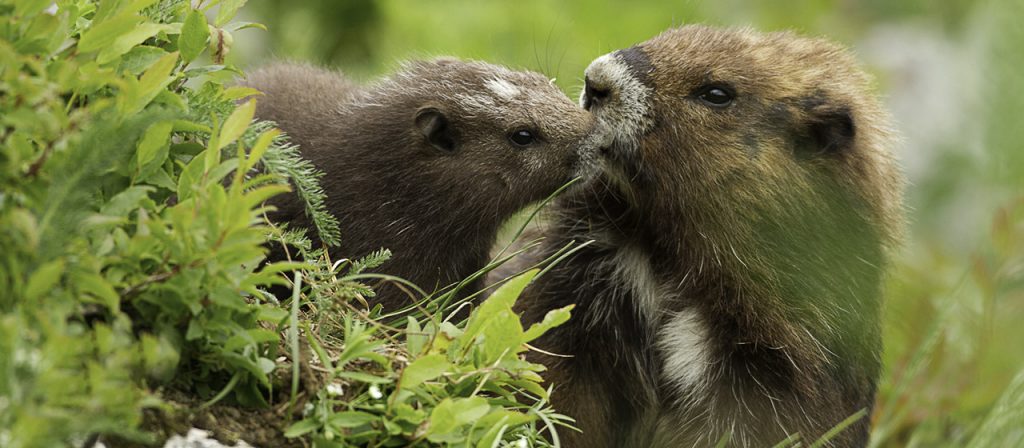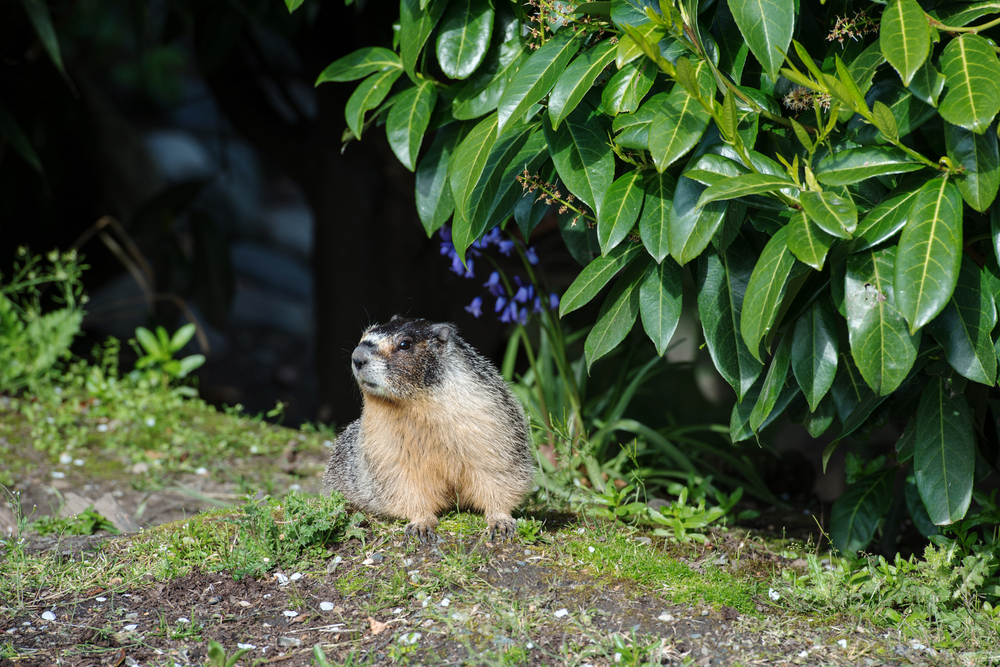
Marmot populations are rising in Vancouver. In your yard, they may search for food, water, and shelter in rural and urban neighborhoods. They can cause damage to your lawn, garden, home, and automobile. Learning about marmot control in Vancouver, British Columbia, is crucial to developing a strategy to manage them so they don’t destroy your property.
Getting to Know Vancouver’s Marmots
Marmots are rodents and members of the squirrel family. Two species of marmots live in Vancouver: the yellow-bellied or rock chuck and the woodchuck or groundhog marmots.
Marmot Characteristics
Marmot tracks have five toes in the front and four in the back. They have thick, long claws for digging and climbing. Each species has traits that distinguish it from the others. For example, the yellow-bellied marmot’s belly fur is yellow and may have hints of red. It has white patches between its eyes. They are about 0.5 meters long and can weigh up to 5 kg.
Woodchucks or groundhogs have mostly brown fur. The shades of brown can range from tan to reddish-brown to black. Their weight varies greatly, ranging between 4 kg and 14 kg.
Marmot Behaviours
Marmots are most active during the day, usually around dawn and dusk. They spend most of their time searching for vegetables, fruits, seeds, nuts, flowers, grasses, snails, insects, bird eggs, and smaller animals. They consume up to 1.5 lbs or 0.68 kg of food daily.
Yellow-bellied marmots live in colonies of 10 to 20. In contrast, woodchucks tend to live alone. Marmots dig extensive burrow systems, with entrances at tree bases, roots, rock outcrops, or buildings’ edges. Burrows are at least 0.9m deep and may go further than 4.5m.
Their favorite living places are under rocks, logs, buildings, and storage bins. Their burrows create unstable foundations, making the structures hazardous for you and your family.
Marmots hibernate for about eight months, starting in the fall. They spend the other four months gathering and eating food to gain weight. When hibernating, they live off their stored fat and may only take one breath every two or three minutes.
Unique Challenges of Managing Marmot Presence in Vancouver
Environmental Factors
Human activity and climate change are among the primary environmental factors contributing to the thriving marmot population in Vancouver. Higher temperatures stress marmots, who are used to hibernating most of the year. Flooding, droughts, and snow accumulations affect growing seasons, hibernation time, and burrow security.
When trees and vegetation are cut down for residential or commercial development, marmots lose their habitats. Some marmots choose to stay where they are, living among humans, while others migrate to other areas.
Impact of Marmot Activity
Residential and public spaces are impacted by marmot activity. Marmots find places to burrow that are best for them, even if that place is in the middle of a golf course, agricultural field, sports field, or under homes and office buildings.
Marmots leave feces and urine wherever they travel. This waste is foul-smelling and can grow mold spores that can harm humans if ingested. Like other rodents, marmots chew and gnaw on many things. This includes garden hoses, vehicle radiator hoses, electrical wires, irrigation lines, and plastic ductwork.
Marmot Concerns
Marmots can damage homes, barns, sheds, and office buildings by creating burrows under them. This makes the foundation unstable. Everywhere there is a burrow, a structure is at risk of caving, cracking, or breaking. Burrows also cause structural damage to dams, retaining walls, and embankments.
Burrows in yards and fields are hazardous for humans and animals. Holes in the ground are tripping hazards that can lead to severe injuries. In agricultural fields, livestock may break a leg if they step into a burrow.
Marmots destroy gardens by chewing the entire plant down to nothing, not just stealing fruits or vegetables. If you notice your car is leaking antifreeze, it may be because a marmot chewed through the hose to drink the sweet but toxic chemicals.
Other areas of concern are human health risks when encountering a marmot or their waste. Marmots are known to carry parasites and pathogens. For example, they carry the tick that transmits Rocky Mountain spotted fever. Fleas found on marmot fur may carry and transmit sylvatic plague. Cryptosporidiosis is transmitted through food or water polluted with marmot feces or urine.
Signs of Marmot Infestation
Marmots create noticeable signs of activity and infestation, including:
- Holes or entrances at the base of trees or along buildings.
- Holes in your yard.
- Foot tracks in the ground.
- Soft spots in the ground or areas that look like they are sinking.
- Cracks in your home or building foundation, driveway, patio, sidewalk, etc.
- Chew or gnaw marks on anything plastic, vinyl, wood, rubber, or soft metals.
- Damaged hoses, wires, trees, siding, gardens, or crops.
- Damaged lines and hoses in vehicles.
Take action at the first sign of marmot activity to avoid costly repairs or replacements.
Effective Strategies for Marmot Management
The most effective strategies for managing marmots involve integrated pest management. This approach utilizes multiple methods based on your unique situation. Examples of various non-lethal methods include:
- Exclusion using fencing under and above ground.
- Electric fences.
- Frightening devices, such as the sound of dogs barking.
- Repellents, like predator urine.
- Safe and humane live-trapping and relocating.
- Toxicants like fumigation.
- Flushing out their dens, then sealing burrows.
These strategies are best done by a wildlife control professional who can ensure your and the animal’s safety.
Seeking Professional Help
Hiring professional services for marmot control in Vancouver, British Columbia, has many benefits. Professionals thoroughly inspect your property to assess marmot activity and damages. They also have extensive knowledge of marmot habits and habitats. They know which integrated pest management techniques work to remove one marmot or a colony. Moreover, they have the equipment and tools to do the job, like safe and humane trapping systems.
Professionals understand the laws in Vancouver regarding relocating a marmot. Most importantly, experts know the state and federal regulations regarding marmots listed as threatened or endangered, including necessary permits required for removing nuisance marmots. This is critical since all marmots are protected under the BC Wildlife Act.
A reputable pest control company in Vancouver will have the proper licensure, insurance, certification, and equipment to perform the job. Its website will also have great reviews, and its staff will respond to your concerns quickly.
Conclusion
Marmot control in Vancouver, British Columbia, presents unique challenges. People risk being bitten or coming into contact with parasites and pathogens. A multi-layered approach that includes various techniques must be used to eliminate marmots effectively.
You must be proactive to keep your safety and property secure. If you notice signs of marmot activity, contact a wildlife control professional immediately.

